MARIANI’S
January
20, 2008
NEWSLETTER

Penelope Cruz in "Woman on Top" (2000)
NEW! Click esquire.com
to go to my new column at Esquire Magazine.
ARCHIVE: Readers may now access
an
Archive of all past newsletters--each annotated--dating back to July,
2003, by simply clicking on www.johnmariani.com/archive
SUBSCRIBE AND
UN-SUBSCRIBE: You may subscribe anyone you wish
to this newsletter--free of charge--by
clicking here.
In
This Issue
WHAT'S NEW IN L.A.? by John Mariani
NEW YORK CORNER: Reports from TWO Little Italys: Focolare and Zero Otto Nove by John Mariani
NOTES FROM THE WINE CELLAR: Maremma Makes Wines by Its Own Rules by John Mariani
QUICK BYTES
~~~~~~~~~~~~~~~~~~~~~~~~~~~~~~~~~~~~~~~~~~~~~~~
What's New in L. A. ? by John Mariani
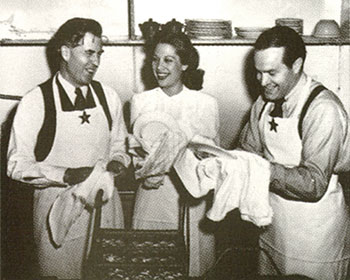
All’Angelo
7166 Melrose Avenue
323-933-9540
www.allangelo.com.
Like your prosciutto bible paper thin? They do it by hand on a 1921 black Burkel slicer, so that “no electric machine blade warms the meat.” You love tripe? Even if you don’t, Paderno’s silken version with grilled polenta will make you a convert. Insistent that fritto misto of fried fish and zucchini be crackling crisp and greaseless? No problem here. Adamant about the correct, creamy texture of risotto? Paderno’s is perfect, scented and colored with saffron.
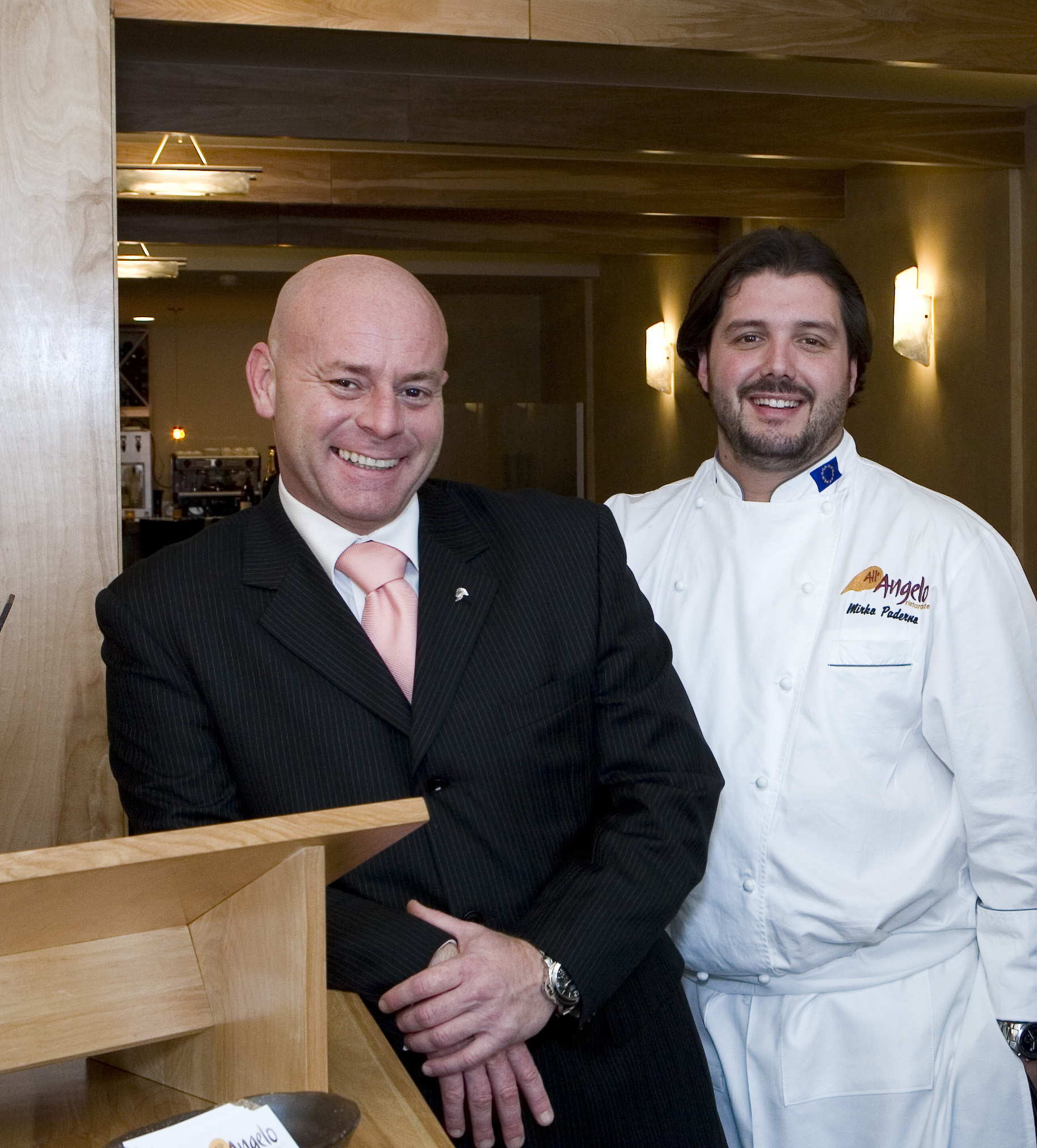
You might begin with Venetian cichetti, bites like octopus salad with bottarga roe, a cauliflower timballo with Parmesan cheese sauce, or beef meatballs with polenta and tomato sauce. The pastas are all marvelous, particularly the house-made spaghetti alla chitarra with langoustines in white wine, and the saffron risotto. They also serve the best veal filet in L.A., seared and bathed in a white wine sauce with roasted fingerling potatoes. The roast squab is cooked Titian red, and the filet of John Dory fish comes with bright heirloom tomatoes and beans. Everything is cooked to the moment, the textures perfect, the temperatures the way they should be to bring out the best flavors. Succulence rules here.
There is an excellent winelist, mostly Italian, with more than 25 available by the glass. For dessert there is a fine polenta budino pudding with caramelized lemon, a rich chocolate torta, and an almond crème brûlée, all worth savoring.
All'Angelo is open for lunch Mon.-Fri. and for dinner Mon.-Sat. Dinner prices are $13-$25 for first courses and pastas, and $29-$36 for main courses.
F raîche
Culver City
310-839-6800
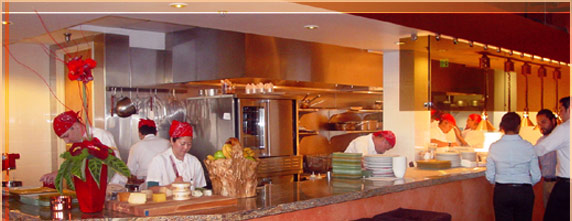 You'll
get differing opinions about how Culver City is developing, but if
corner restaurants like Fraîche increase, the nightlife and
streetlife can do nothing but improve. Set off a broad boulevard
with ample outdoor seating, an open kitchen (left), warm cobblestone walls
and wood inside,
Fraîche has a decidedly neighborhood feeling, and chef-owner
Jason Travi, originally from Massachusetts, comes from a big family of
Italian-American cooks and restaurateurs, and he has trained in L.A.
area kitchens
like Granita and Spago (as sous-chef), and as exec chef at both Opaline
and Terza. He then spent a month studying Italian cuisine at Al Cavallino Bianco in northern
You'll
get differing opinions about how Culver City is developing, but if
corner restaurants like Fraîche increase, the nightlife and
streetlife can do nothing but improve. Set off a broad boulevard
with ample outdoor seating, an open kitchen (left), warm cobblestone walls
and wood inside,
Fraîche has a decidedly neighborhood feeling, and chef-owner
Jason Travi, originally from Massachusetts, comes from a big family of
Italian-American cooks and restaurateurs, and he has trained in L.A.
area kitchens
like Granita and Spago (as sous-chef), and as exec chef at both Opaline
and Terza. He then spent a month studying Italian cuisine at Al Cavallino Bianco in northern The one-page menu is of sufficient length to show sufficient range without trying to serve something for everyone, and the slant is as much Cal-Mediterranean as it is Italian (as evidenced by the French name Fraîche; the Italian name fresca is already being used by a restaurant in Glendale). I urge you to try the salumi and charcuterie selections, which include 24-month aged prosciutto and excellent tête de veau. There is boudin noir with lentils and Dijon cream among the appetizers, along with cured branzino with a blood orange paste and fennel seeds.
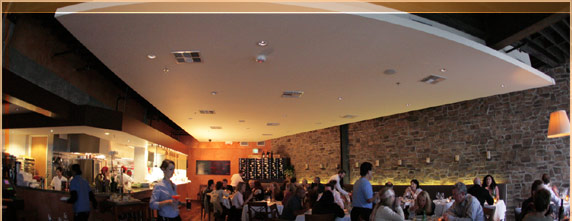
I enjoyed two very good pastas here--ravioli with peas, mint, and a dollop of ricotta, and a risotto with chanterelles, asparagus, and a hint of thyme. Main dishes stay pretty much the same here month after month and include a very well wrought. lush spezzatino lamb stew with ricotta gnocchi and sweet-tangy gremolata. Sautéed sole, that evening, was overcooked and not helped by too-soft heirloom tomatoes and green beans dashed with balsamic.
Desserts seem like an afterthought here, including some disappointingly heavy bomboloni fritters and a bland, not very crisp Paris-Brest.
As lovable as the premises look--and I love that extraterrestrial 1950s ceiling work! (above)--I would only choose to sit outside, because the noise and music inside is positively deafening.
Whether people will drive to Culver City to dine at Fraîche is open to question, but if you're in that neck of the woods, by all means claim an outdoor table, have some good food and wine, and watch the cars zoom by.
Fraîche is open for lunch and dinner Tues.-Sun. Prices for appetizers run $6-$24, pastas $10-$14, entrees $22-$26.
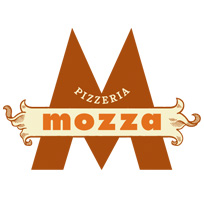
641 North Highland, Los Angeles
323-297-0101
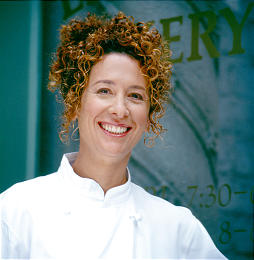
On the afternoon I visited, Silverton was there in her apron, and was dashing next door to a larger space named Osteria Mozza, which is more of a ristorante and which had just opened that week. Already reservations had piled up high for weeks, as has been the case at Pizzeria Mozza since opening last spring. Getting a table at either at any time is never easy, though the later you go to any restaurant in Los Angeles, the better your chances of scoring a table. Fortunately Mozza is open till midnight.
The premises are more functional than decorative, though I can't understand why any restaurant would use McDonald's red-and-yellow colors in a dining room as an attraction. There's a counter that's handy, and the place turns over fairly quickly. Still, there's usually a line at the door.
Of course, L.A. has a strong tradition of pizza-making dating to Wolfgang Puck's original concept for Spago, where innovative pizzas became all the rage. California Pizza Kitchen leapt on that anything-goes bandwagon and became a nationwide chain, with all the attendant dumbing down that involves.
Silverton focuses on her pizzas, which number about 15 in variety, about 12 inches in diameter. Yet I was actually happier with the non-pizza items on the menu than the pizzas themselves. The men lists several antipasti, including superb salumi from Batali's father's charcuterie in Seattle, along with a very good chopped salad, fried arancini rice balls alla bolognese, bruschette topped with chicken livers and white beans, and panini sandwiches on first-rate rolls.
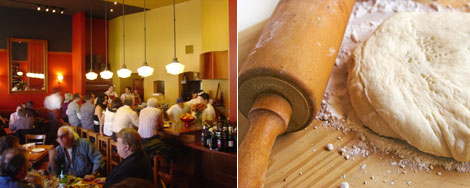 There is a Piatto del
Giorno, which ranges from chicken alla cacciatore on Monday to lasagne al forno on Sunday. I was
delighted with Saturday's hearty, complex lamb stracotto stew, which was also a
good buy at $20.
There is a Piatto del
Giorno, which ranges from chicken alla cacciatore on Monday to lasagne al forno on Sunday. I was
delighted with Saturday's hearty, complex lamb stracotto stew, which was also a
good buy at $20.I'm sorry to say that I wasn't bowled over by the pizzas, however. The crust--the most important part of a good pie--was very good, puffy but crisp, bubbly and charred, but a margherita came with an oddly sweet tomato slick that bore more resemblance to a bottled tomato sauce than to any margherita topping I've ever had. A creamy burrata mozzarella pizza was a bit better but needed some seasoning beyond the squash blooms and tomato on it.
The winelist on the back of the menu is about 60 bottles long, with more whites than necessary, and about 20 selections are available by the quartino (250 ml.), ranging from $9-$18.
I didn't have a chance to visit the Osteria next door but, given the talent behind these two eateries, I'll attempt to get back to both again. But there's the rub: Just getting in can be so exasperating as to take away much of the drop-in charm of such restaurants. Not their fault, but making plans long in advance to have a pizza can be a little daunting.-
Pizzeria Mozza is open daily noon to midnight; Appetizers run $8-$24, pizzas $9-$17, and daily specials $17-$20.
NEW YORK CORNER
A TALE OF TWO
LITTLE ITALYS
By John Mariani
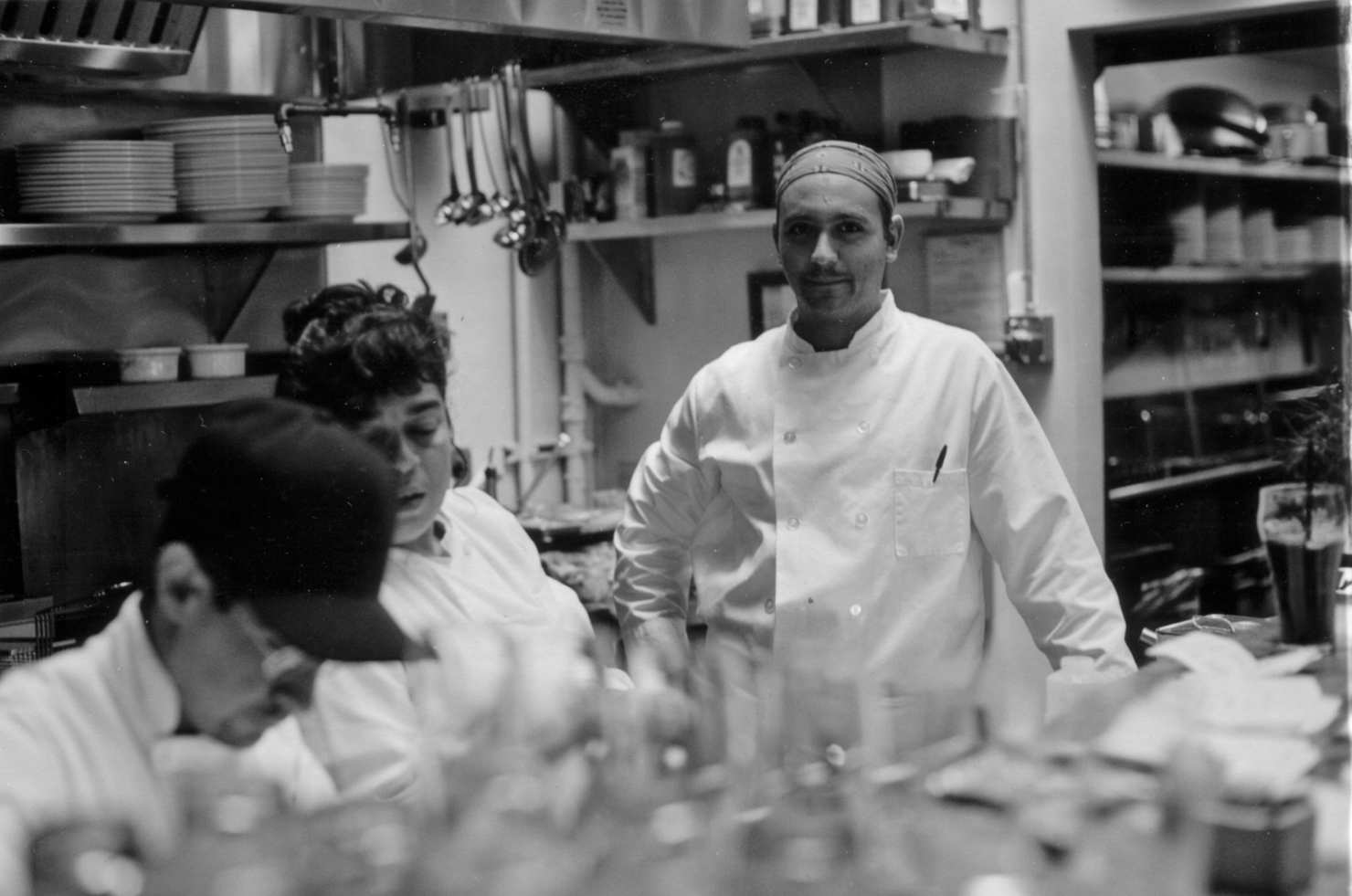
115 Mulberry Street (near Hester Street)
(212) 993-5858
No one is more depressed by the quality of food in Manhattan's Little Italy than I. Once a true Italian immigrant neighborhood, it hangs on as an adjunct of its Chinatown landlords as a tourist spot for people who derive some addled pleasure from the idea that this tawdry neighborhood still bears some resemblance of what it used to be like 100 years ago when Italians did indeed live and work here, opening pizzerias and eateries that were designed to appeal to locals and afterwards to americani who had begun to show some interest in exotic food like spaghetti and meatballs, manicotti, and cannoli--foods those same immigrants rarely enjoyed back home but eventually developed into a cuisine that had so much legitimacy that my wife and I wrote an entire cookbook about it, The Italian-American Cookbook.
Nevertheless, Little Italy by and large eventually evolved into a picturesque place a tourist went for the experience of it all--the wash hanging out the window, the street vendors, the coffee shops (many of which gave spirit to the Bohemian culture of Greenwich Village to the North). By the 1980s Little Italy had become a decrepit and embarrassing wasteland of mediocre (or worse) Italian food., its streets filthy, its hustlers manifest, and its despicable association with the disturbing glamor of gangsters and mob rub-outs (one in 30 years) as an added attraction.
 There have been occasional attempts at
changing the dynamic and upping the quality of Little Italy in the
past--the streets are cleaner
now--though 9/11 exacted a disastrous toll on the neighborhood's
economy. But unless the old-line restaurants, with their dreadful,
overcooked,
thrown-at-you slop, change, who with any taste would ever want to eat
there?
There have been occasional attempts at
changing the dynamic and upping the quality of Little Italy in the
past--the streets are cleaner
now--though 9/11 exacted a disastrous toll on the neighborhood's
economy. But unless the old-line restaurants, with their dreadful,
overcooked,
thrown-at-you slop, change, who with any taste would ever want to eat
there?The arrival of Focolare, then, is a straw bending in the wind, and I welcome it, as I would any good restaurant anywhere. Taking over the former space of Fratelli last summer, Chef-owner Franco Lania (above) is a Jersey Boy whose family had settled in Little Italy when it was a thriving Italian community. As a chef he's worked everywhere from Manhattan's Sea Grill to Miami's China Grill and was exec chef at Sage on Fifth in South Beach. With manager Diana Casey, who oversees the very user friendly winelist, Lania invests the place with genuine Italian hospitality, as opposed to the hucksterism and grunting service found elsewhere on the block. He's happy to come out of the kitchen to tell you what's special, and he is very happy that you've chosen to dine at his place, which is done in a kind of rustic charm with dark wainscoting and walls hung with mirrors and ceramics, with a good old sturdy bar. I wish there were tablecloths here, which would brighten things, but the gregariousness of the place brings its own glow, and people can be seen to be having a very good time at every table, whether feasting with gusto or looking dreamily at each other while holding hands.
For starters I enjoyed pan-seared scallops over truffled mashed potatoes with a grappa-laced beet vinaigrette--a hefty portion at only $13, or as an entree $25. The arancini of saffron rice with peas and fontina cheese inside and a tomato ragù on the side were hot and crisp and gooey rich, while tender grilled octopus came with fregula, celery, and a lemon-oregano vinaigrette.
Penne alla norma is a great Italian dish you don't see often enough, and here, with roasted eggplant, pecorino, and tomato ragù, it is done with real gusto, as was a special that evening of cannelloni stuffed with rabbit. Each evening there is a piatto del giorno, and the night I visited that was a huge bowl of zuppa di pesce in a saffron-fennel broth. I also had a rack of lamb--again very generous--with a roasted garlic and chickpea puree, prosciutto-wrapped endive, and rosemary lamb jus, which added up to too much on one plate, though all was quite tasty.
If Little Italy is to be more than it seems content to be right now, it's going to be restaurants like Focolare that effect the change for the better.
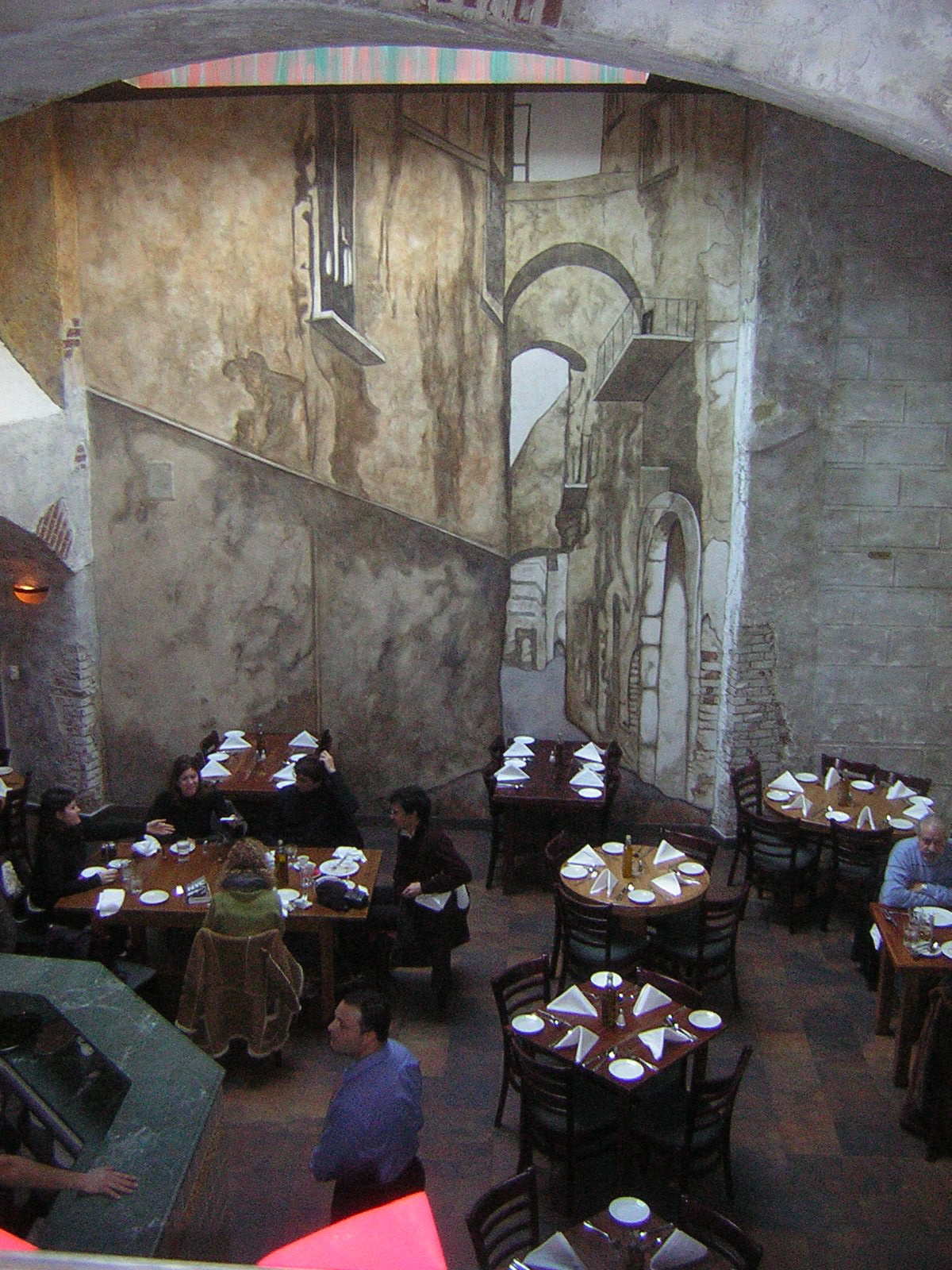 zero
otto nove
zero
otto nove2357 Arthur Avenue
Bronx, NY
718-220-1027
You won't find hawkers outside the doors of the restaurants here, and they do business based on a strong local clientele from all over the Bronx, as well as those who moved away and return here to eat, along with people who drive all the way from Long Island, Westchester County, and New Jersey.
Zero Otto Nove (089) is the area code for
Ten years ago Paciullo opened Roberto's one of the best trattorias in
The usual trajectory for Italian immigrant cooks has been first to open a pizzeria, then, after making a success of it, opening a real ristorante. Paciullo has reversed that process with Zero Otto Nove by concentrating on making great pizza and expanding the idea with equally delicious rustic Italian food. Indeed, the two-story premises (Paciullo became a local hero when he took over and demolished a much-despised McDonald’s here) were designed to mimic the atmosphere of the narrow streets and alleyways of his hometown, where he was one of eleven children. “My father would come home at
There is a big open wood-burning pizza oven, which Paciullo had brought over from
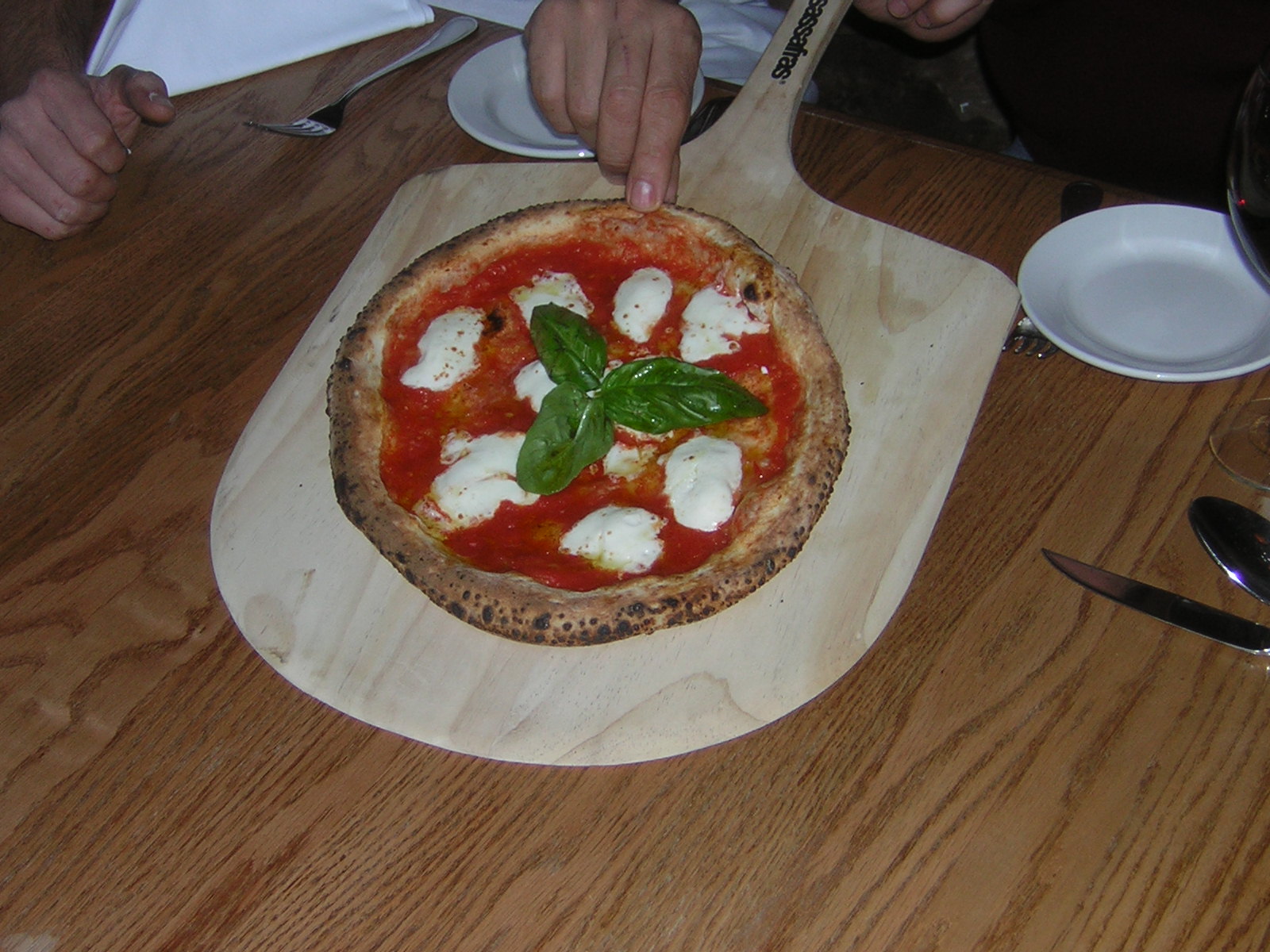
These are not those trendy ultra-thin pizzas made in
But the pizzas are only the beginning at Zero Otto Nove. The menu goes on to list nine antipasti, including fabulous baby octopus cooked in tomato sauce, five salads, three soups, and seven very different, very lusty pastas, including a pasta e fagioli azzeccata, made by baking pasta, cannellini beans, and prosciutto. Fusilli con ceci is a generous bowl of chick peas, crispy pancetta, toasted breadcrumbs, and sharp pecorino cheese, while linguine comes in a silky black sauce teeming with calamari and cuttlefish.
Then you get to the main courses, which are every bit as rich, including just about the best stewed rabbit in tomato and rosemary sauce I’ve had in New York, and baccalà (salted cod) baked with tomato and served with fried potatoes.
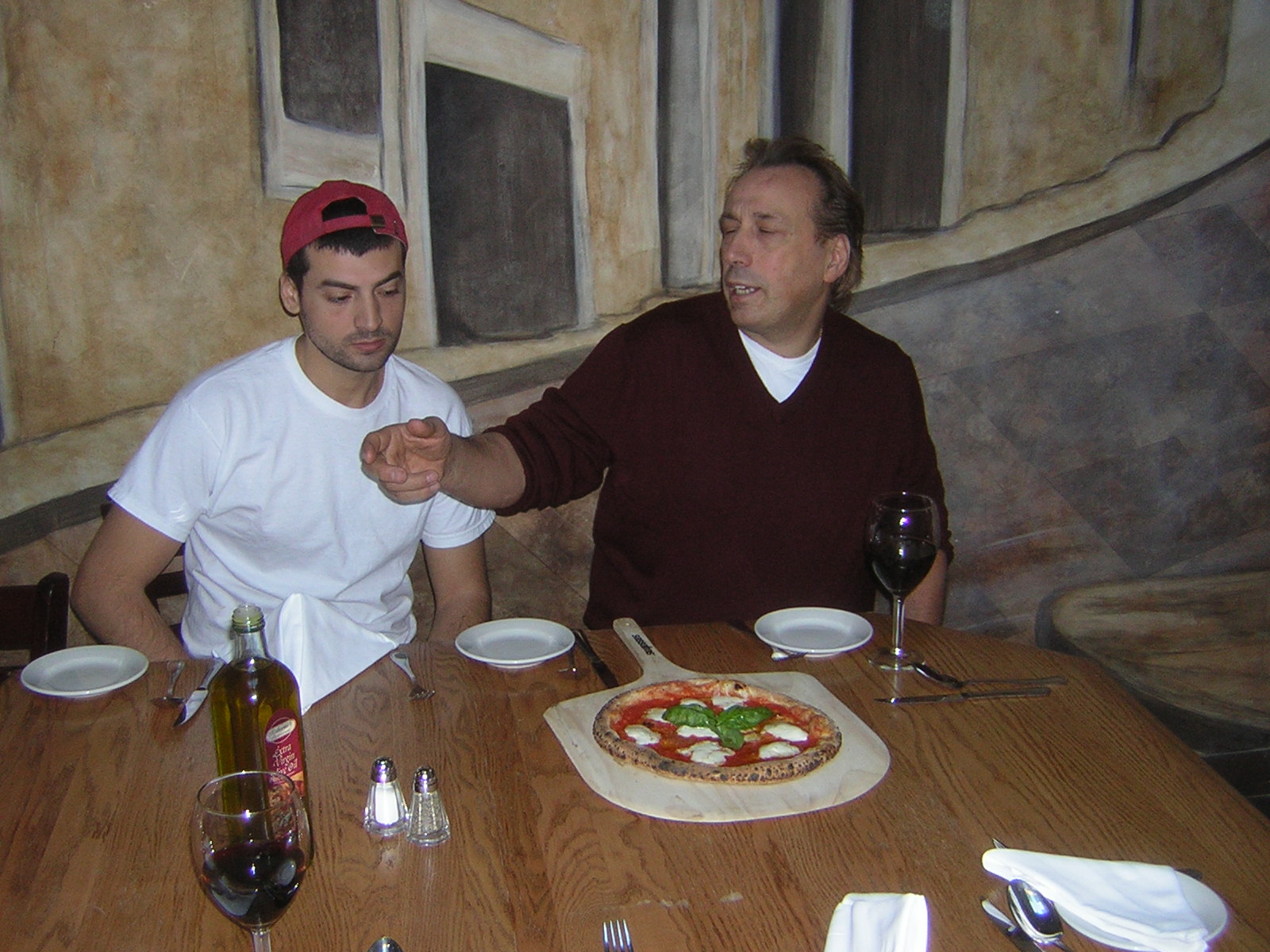 On the other side of
the menu is winelist
of more than 100 selections, most well under $50. It
is a list that perfectly matches the food
here—a hearty Drapanaum Nero d’Avola 2005 ($32),a delightful
Deconciliis Donna
Luna Aglianico 2005 ($45) next to the same label’s beautifully
structured Naima
2004 ($110), and bold Due Palme Primitivo Le Sciare 2005 ($22). There
is also
Paciulo’s own favorite, which he and his friends in Salerno drink
with pizza—a slightly sweet, fizzy red
Cantine Fredericiane
Gragnano ($29), close to a Lambrusco.
On the other side of
the menu is winelist
of more than 100 selections, most well under $50. It
is a list that perfectly matches the food
here—a hearty Drapanaum Nero d’Avola 2005 ($32),a delightful
Deconciliis Donna
Luna Aglianico 2005 ($45) next to the same label’s beautifully
structured Naima
2004 ($110), and bold Due Palme Primitivo Le Sciare 2005 ($22). There
is also
Paciulo’s own favorite, which he and his friends in Salerno drink
with pizza—a slightly sweet, fizzy red
Cantine Fredericiane
Gragnano ($29), close to a Lambrusco.Paciullo (left, with Riccardo) is just as committed to his desserts, which includes a pizza alla Nutella (baked pizza dough lavished with a thick chocolate-hazelnut paste), crisp, creamy homemade cannoli, and a torta della nonna (“grandma’s tart”) with almond cream and pinenuts.
There are other excellent pizzas along
Zero Otto Nove is open Tues.-Sun. for lunch and dinner. Pizzas run $10-95-$14.95, pastas $13.95-$22.95, and main courses $15.95-$24.95.
NOTES FROM THE WINE CELLAR
by John Mariani

Hundred dollar-a-bottle Super Tuscan wines may be the stars of Tuscan viniculture, but some of the most interesting, well-priced wines out of Italy are now coming from Maremma, in southern Tuscany. It is a region of hilltowns, the broad plains of
The region is also famous for its butteri, cowboys who until recently rode on horseback to herd cattle (above), a tradition kept alive by the Associazione di Butteri d’Alta Maremma. The organic beef from the area is highly regarded, as are caprini goat’s cheeses, extra-virgin olive oil, and honey.
Maremma’s wines, however, have largely been neglected, overshadowed not only by the famous Super Tuscans, but by wines of Brunello di Montalcino and Chianti Classico, both of which have the prestigious legal appellation, D.O.C.G.
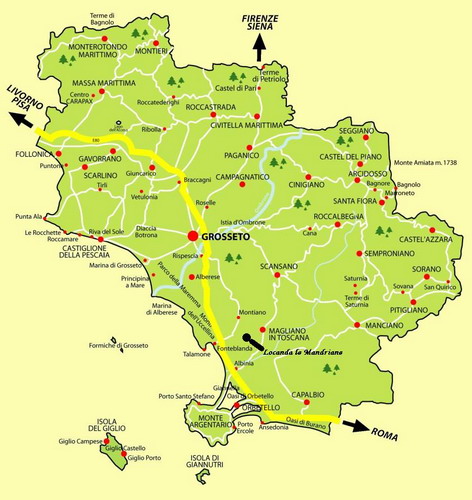
While a few Maremma wines, like Morellino di Scansano, do carry a the lesser D.O.C. appellation, most fall under the increasingly exciting category of I.G.T.—Indicazione Geografica Tipica—which as of 2002 has recognized about 200 new classifications for wineries wanting to make high quality wines outside the strict regulations for D.O.C. and D.O.C.G. (which represent only about 20 percent of Italy’s total production).
Prior to that (including most of the Super Tuscans) such wines were labeled simply “vino da tavola,” table wines. Certain grape varieties still must be used within a geographic region (at least 85 percent) to achieve I.G.T. status, but the winemakers are free to blend pretty much what they wish in myriad combinations.
As a result many local producers are able to make better wines at very reasonable prices; as a result some big names from northern
The soil of Maremma is rich in iron, copper, lead, zinc, and pyrites, giving the red wines a pronounced minerality that northern Tuscan wines often lack. Yet you still taste the warm sun of the
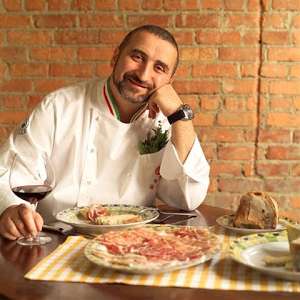 Recently various New York Italian
restaurants featured the wines of Maremma, most persuasively a
restaurant by the
same name, Maremma , owned by Tuscan chef Cesare
Casella (left), who serves
dishes like acquacotta
(“cooked water”), a rich vegetable
soup with garlic, chilies, and an egg yolk on grilled toast;
pappardelle with
wild boar; tortelli pasta
stuffed with
beets and ricotta with a meat ragù;
caldaro, a fish soup
full of octopus and squid;
and a lamb stew called buglione.
Recently various New York Italian
restaurants featured the wines of Maremma, most persuasively a
restaurant by the
same name, Maremma , owned by Tuscan chef Cesare
Casella (left), who serves
dishes like acquacotta
(“cooked water”), a rich vegetable
soup with garlic, chilies, and an egg yolk on grilled toast;
pappardelle with
wild boar; tortelli pasta
stuffed with
beets and ricotta with a meat ragù;
caldaro, a fish soup
full of octopus and squid;
and a lamb stew called buglione.These are precisely the kinds of dishes that marry so well with the intense but medium-bodied red wines of Maremma. Casella carries the La Mozza wines, along with top names like Salustri, Poggio Argentiera, Collemassari, Ampeleia, and La Selva.
Among these, there is an amazing difference in style and grape blendings. Ampeleia 2004, an I.G.T. wine selling for about $40,
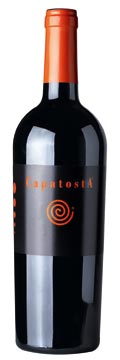 is 50 percent
cabernet franc, 20 percent sangiovese, with five other “Mediterranean
varieties” making up the rest of the blend. Azienda Salustri’s D.O.C.
is made entirely
from a Maremma sangiovese clone called Grotte Rosse, culled from
50-year-old vineyards
($45). Poggio Argentiera was founded only ten years ago from two
estates around
is 50 percent
cabernet franc, 20 percent sangiovese, with five other “Mediterranean
varieties” making up the rest of the blend. Azienda Salustri’s D.O.C.
is made entirely
from a Maremma sangiovese clone called Grotte Rosse, culled from
50-year-old vineyards
($45). Poggio Argentiera was founded only ten years ago from two
estates around These wines are not easy to find in the
They are wines well worth searching out or asking for, and if you’re in
John Mariani's weekly wine column appears in Bloomberg Muse News, from which this story was adapted. Bloomberg News covers Culture from art, books, and theater to wine, travel, and food on a daily basis, and some of its articles play of the Saturday Bloomberg Radio and TV.
DIGNITY, ALWAYS...DIGNITY 
At
the
 FOOD WRITING 101: GERTRUDE STEIN
IS NOT A GOOD MODEL FOR RESTAURANT REVIEWING
FOOD WRITING 101: GERTRUDE STEIN
IS NOT A GOOD MODEL FOR RESTAURANT REVIEWING
“My
plan was to love it and if I didn’t love it, and couldn’t love it, then
to
write it up as if I loved it anyway, and leave you, my perspicacious
and
sharp-witted readers, to read my true meaning.”—Giles Coren, “A Review
of
Texture,” The [London] Times (Nov. 3, 2007).
QUICK BYTES
* From Jan. 23-26 The 17th Annual Zinfandel Advocates & Producers Festival will take place in
*
On Jan. 27 in
* On Jan. 28 in
* In
* On Feb. 7 a Léal Vineyards Wine Dinner Benefit will be held to raise funds for Girls for a Change (www.girlsforachange.org) at Michael Mina’s Arcadia in
Jazz Mafia, Vau de Vire Society, acrobats and other performers. $40 pp.
* From Feb. 13-17, “Truffles, wine, foie gras and duck” is the theme for BKWine's first tour of 2008, led by Britt Karlsson, incl. accommodation at a luxury Bordeaux chateau, a truffle hunt and truffle lunch, a workshop on how to prepare foie gras and other duck specialities, visits to wine producers in Saint Emilion and Bergerac, 4 dinners and 3 lunches. 1240 euros. Visit www.bkwine.com.
NEW FEATURE: I am happy to report that the Virtual Gourmet is linking up with two excellent travel sites:
Everett Potter's Travel Report:
Tennis Resorts Online: A Critical Guide to the World's Best Tennis Resorts and Tennis Camps, published by ROGER COX, who has spent more than two decades writing about tennis travel, including a 17-year stretch for Tennis magazine. He has also written for Arthur Frommer's Budget Travel, New York Magazine, Travel & Leisure, Esquire, Money, USTA Magazine, Men's Journal, and The Robb Report. He has authored two books-The World's Best Tennis Vacations (Stephen Greene Press/Viking Penguin, 1990) and The Best Places to Stay in the Rockies (Houghton Mifflin, 1992 & 1994), and the Melbourne (Australia) chapter to the Wall Street Journal Business Guide to Cities of the Pacific Rim (Fodor's Travel Guides, 1991). Click on the logo below to go to the site.
~~~~~~~~~~~~~~~~~~~~~~~~~~~~~~~~~~~~~~~~~~~~~~~~~~~~~~~~~~~~~~~~~~~~~~~~~
MARIANI'S VIRTUAL GOURMET NEWSLETTER is published weekly. Editor/Publisher:
John Mariani. Contributing Writers: Robert Mariani, Naomi
Kooker, Kirsten Skogerson, Edward Brivio, Mort
Hochstein, Suzanne Wright. Contributing
Photographers: Galina Stepanoff-Dargery, Bobby Pirillo. Technical
Advisor: Gerry McLoughlin.
Any of John Mariani's books below
may be ordered from amazon.com by clicking on the cover image.
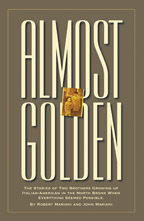 My
newest book, written with my brother Robert Mariani, is a memoir of our
years growing up in the My
newest book, written with my brother Robert Mariani, is a memoir of our
years growing up in the For those of you who don't think of the Robert and I think you'll enjoy this very personal look at our --John Mariani |
 |
 |
 |
 |
 |
 |
© copyright John Mariani 2008

